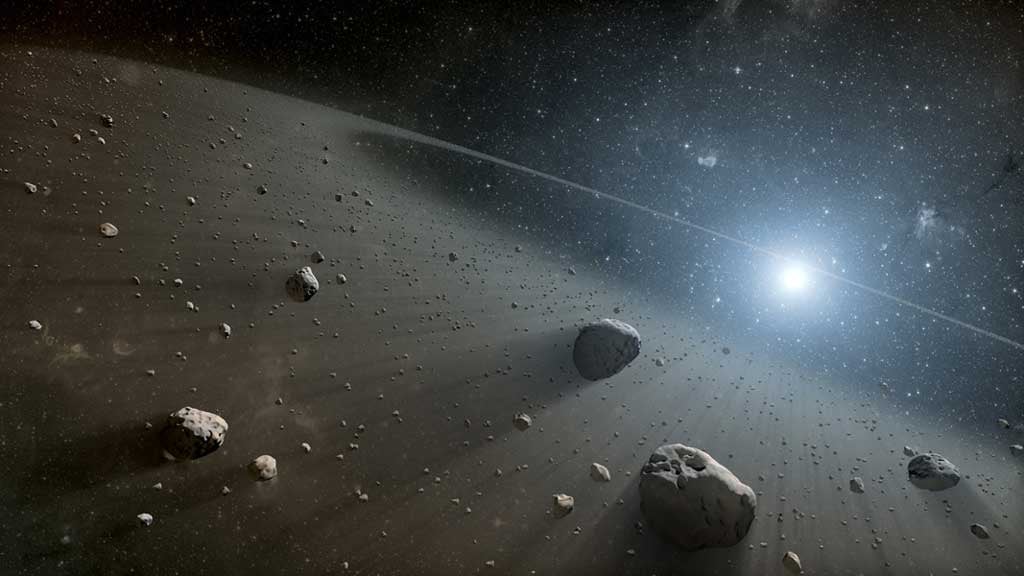Scientists using a NASA-funded telescope have detected water-ice and carbon-based organic compounds on the surface of an asteroid. The cold hard facts of the discovery of the frosty mixture on one of the asteroid belt’s largest occupants suggest that some asteroids, along with comets, were the water carriers for a primordial Earth.
“For a long time, the thinking was that you couldn’t find a cup’s worth of water in the entire asteroid belt,” said Don Yeomans, manager of NASA’s Near-Earth Object Program Office at the Jet Propulsion Laboratory in Pasadena, California. “Today we know you not only could quench your thirst, but you just might be able to fill up every pool on Earth, and then some.”
The discovery is a result of 6 years of observing asteroid 24 Themis by astronomer Andrew Rivkin of the Johns Hopkins University Applied Physics Laboratory in Laurel, Maryland. Rivkin, along with Joshua Emery of the University of Tennessee in Knoxville, employed the NASA Infrared Telescope Facility to take measurements of the asteroid on seven separate occasions beginning in 2002. Buried in their compiled data was the consistent infrared signature of water-ice and carbon-based organic materials.
The study’s findings are particularly surprising because it was believed that Themis, orbiting the Sun at only 297 million miles (479 million kilometers), was too close to the solar system’s fiery heat source to carry water-ice left over from the solar system’s origin 4.6 billion years ago.
Now, the astronomical community knows better. The research could help rewrite the book on the solar system’s formation and the nature of asteroids.
“This is exciting because it provides us a better understanding about our past and our possible future,” said Yeomans. “This research indicates that not only could asteroids be possible sources of raw materials, but they could be the fueling stations and watering holes for future interplanetary exploration.”
Rivkin and Emory’s findings were independently confirmed by a team led by Humberto Campins at the University of Central Florida in Orlando.
NASA detects, tracks, and characterizes asteroids and comets passing close to Earth using both ground-based and space-based telescopes. The Near-Earth Object Observations Program, commonly called Spaceguard, discovers these objects, characterizes a subset of them, and plots their orbits to determine if any could be potentially hazardous to our planet.










